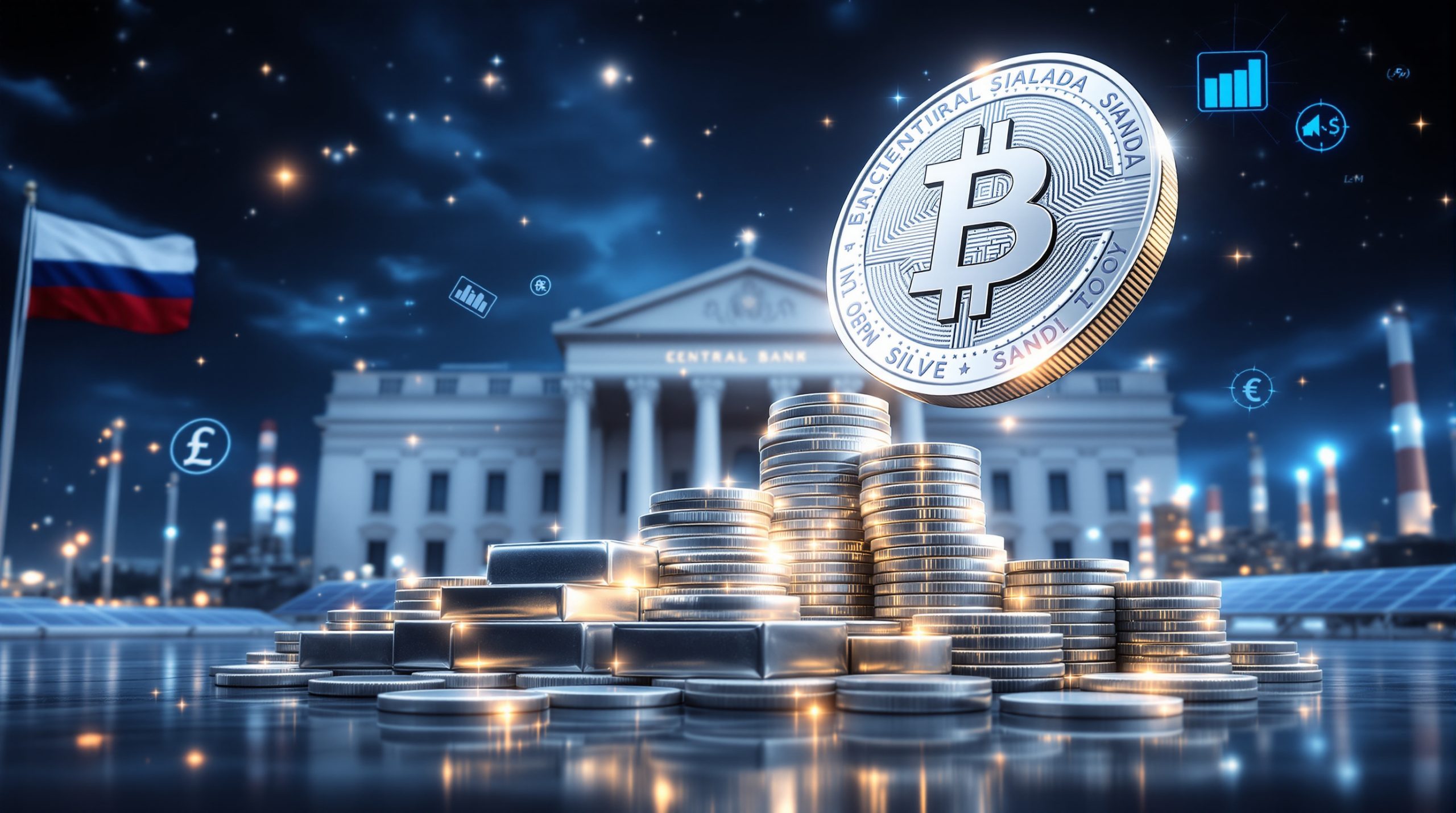Historical Context of Central Bank Silver Holdings
For nearly 150 years, central banks around the world have largely overlooked silver as a reserve asset, focusing almost exclusively on gold. This long-standing tradition has created a clear division in how monetary authorities perceive these two precious metals. Gold has maintained its status as the premier reserve asset, while silver has been relegated to industrial and investment markets outside the central banking systems. According to the World Gold Council, central banks collectively hold approximately 36,000 tonnes of gold globally, yet their silver holdings have remained negligible for decades. This stark contrast underscores the historical preference for gold in official reserves.
The Paradigm Shift: Central Banks Enter the Silver Market
A significant transformation began in 2023-2024 when several central banks started to show renewed interest in silver. This shift represents a fundamental change in monetary policy thinking, with implications for global market disruptions and investors alike. Central banks have begun diversifying their reserves beyond traditional assets, with silver emerging as a strategic addition to their portfolios. Analysts describe this development as a “watershed moment” in precious metals markets—the first time in generations that sovereign entities have actively considered silver as a component of their reserve strategies.
Which Central Banks Are Leading the Silver Buying Trend?
Russia’s Strategic Silver Acquisition Program
Russia has emerged as a pioneer in this new central bank approach to silver. The Russian central bank implemented a formal silver acquisition program, marking the first major sovereign commitment to silver in generations. This program includes substantial allocations specifically earmarked for building silver reserves, demonstrating a deliberate strategy rather than opportunistic purchasing. The Russian approach represents a calculated diversification away from dollar-denominated assets while strengthening domestic monetary reserves with tangible, inflation-resistant assets.
Saudi Arabia’s Entry into the Silver Market
Following Russia’s lead, Saudi Arabia became the second major central bank to make significant moves into the silver market. Their approach initially focused on silver-backed exchange-traded products rather than exclusively physical holdings, signaling a similar strategic shift. Saudi Arabia’s investment choices reflect a broader reassessment of reserve assets among oil-producing nations, who are increasingly looking beyond traditional financial instruments to preserve wealth.
Other Nations Showing Interest
Several other central banks have begun exploring silver acquisition programs, albeit with less publicity than Russia and Saudi Arabia. This growing interest suggests the beginning of a potential trend rather than isolated decisions by a few countries. India, for instance, has demonstrated increasing interest in silver, traditionally driven by cultural factors, particularly in rural communities acquiring silver jewelry and ornaments as a store of value. Recent indications suggest potential shifts toward more formal reserve considerations.
What’s Driving Central Bank Interest in Silver?
Economic Diversification and De-dollarization Efforts
Central banks are increasingly seeking to reduce dependency on any single currency or asset class. Silver offers an alternative store of value that operates outside traditional banking systems, providing:
Independence from the dollar-dominated financial system
Protection against potential sanctions or financial restrictions
Diversification of national wealth into tangible assets
This trend aligns with broader de-dollarization efforts observed among various emerging economies seeking greater monetary autonomy. For instance, the People’s Bank of China has increased gold reserves for 18 consecutive months through May 2024, demonstrating the growing appetite among central banks for precious metals.
Industrial Demand Creating Supply Constraints
Unlike gold, silver faces substantial industrial demand pressures that affect its availability. According to The Silver Institute’s World Silver Survey 2024, global silver demand reached 1.242 billion ounces in 2023, with industrial applications accounting for 52.9% of this demand. This dual nature as both a monetary and industrial metal creates unique supply dynamics that central banks are increasingly recognizing as strategically valuable.
Structural Supply Deficits
The silver market has entered a period of persistent supply deficits, with global mine production unable to meet combined industrial and investment demand. Key factors include:
Declining ore grades at major silver mines
Limited new silver project development
Rising production costs affecting mining economics
The Silver Institute reports that global silver mining production reached 822.2 million ounces in 2023, falling significantly short of total demand. This structural deficit creates an attractive fundamental backdrop for central banks looking to acquire assets with favorable supply-demand dynamics.
How Does Silver Compare to Gold for Central Banks?
Market Size and Liquidity Differences
The silver market presents different characteristics than gold for central bank operations. The annual production of silver is approximately 830 million ounces, compared to gold’s 120 million ounces. The market capitalization of silver is around $40 billion, while gold’s is approximately $13 trillion. These differences create both challenges and opportunities for central banks considering silver allocations.
Price Performance and Volatility Considerations
Silver has historically demonstrated greater price volatility than gold, which presents both risks and potential rewards for central bank reserves. Based on CBOE Volatility Index calculations for 2024, gold’s 30-day price volatility typically ranges between 15-25% annualized, while silver often exceeds 30-40%. This higher volatility profile requires central banks to develop more sophisticated risk management strategies when incorporating silver into their reserves.
Complementary Rather Than Replacement Strategy
Central banks appear to be adopting silver as a complement to gold holdings rather than a replacement. This approach allows them to maintain the stability of traditional gold reserves while adding the growth potential of silver. It also diversifies across the precious metals spectrum and hedges against different economic scenarios.
What Impact Could Central Bank Buying Have on Silver Markets?
Potential Price Implications
Central bank participation could fundamentally alter silver market dynamics. If central banks allocated just 1% of their reserves to silver, it would require approximately 170 million ounces—over 20% of annual global silver production. Such demand would likely exceed available supply at current production levels, creating upward pressure on prices.
Effects on Market Structure and Liquidity
Increased central bank participation could transform silver market structure in several ways:
Reduced available inventory for industrial users
Higher baseline demand supporting price floors
Greater institutional interest following central bank leadership
Historical precedents, such as the Hunt Brothers’ attempted silver market squeeze in 1979-1980, illustrate how significant buying can drive prices dramatically.
Long-Term Implications for Silver’s Monetary Role
The re-emergence of central banks as silver buyers could gradually restore silver’s historical monetary role. This shift would enhance the perception of silver as a legitimate reserve asset and could create a two-tier precious metals reserve system (gold and silver). Such changes would represent a return to historical norms, where silver served alongside gold as a monetary metal.
How Are Silver Inventories and Supply Responding?
COMEX and Exchange Inventory Levels
Silver inventories on major exchanges have reached critically low levels, with COMEX registered silver inventories dropping to approximately 44.8 million ounces as of December 2024. This represents less than two weeks of global industrial demand. The ratio of paper silver contracts to physical backing has increased substantially, indicating a tightening market.
Mining Production Challenges
The silver mining sector faces significant challenges in responding to increased demand. Most silver (approximately 70%) comes as a byproduct of other metal mining, and primary silver mines represent only about 30% of global production. Development timelines for new mines typically exceed 5-7 years, and environmental permitting has become increasingly restrictive.
What Should Investors Understand About This Trend?
Differentiating Between Central Bank and Retail Investment
Central bank silver acquisition differs fundamentally from retail investment. Central banks operate on strategic timeframes and can hold regardless of short-term price movements, while retail investors often focus on immediate market conditions.
Potential Investment Implications
For private investors, central bank silver buying carries several implications:
Validation of silver as a legitimate monetary asset
Potential reduction in available supply for private investment
Long-term structural support for the silver thesis
Risk Factors and Considerations
Despite the positive implications, several risk factors remain. Central bank buying could prove temporary, industrial demand might decline during economic contractions, and mining companies could accelerate production in response to higher prices.
How Might This Trend Evolve in the Coming Years?
Potential Expansion to Other Central Banks
The trend could expand beyond early adopters to include other BRICS nations and smaller countries seeking alternatives to dollar reserves.
Integration with Digital Currency Developments
Central bank silver acquisition could intersect with the development of central bank digital currencies (CBDCs), potentially leading to silver-backed digital currencies and new monetary systems.
Key Takeaways About Central Bank Silver Buying
The return of central banks to the silver market represents a historically significant shift after generations of absence. This development signals a potential reassessment of silver’s monetary role in the global financial system. Central bank buying adds a new demand component to an already tight silver market, creating persistent upward pressure on prices.
In conclusion, the evolving landscape of central bank silver acquisitions presents both challenges and opportunities for market participants. As central banks reconsider their reserve strategies, silver may regain aspects of its historical monetary role, reshaping the dynamics of the precious metals market for years to come.




